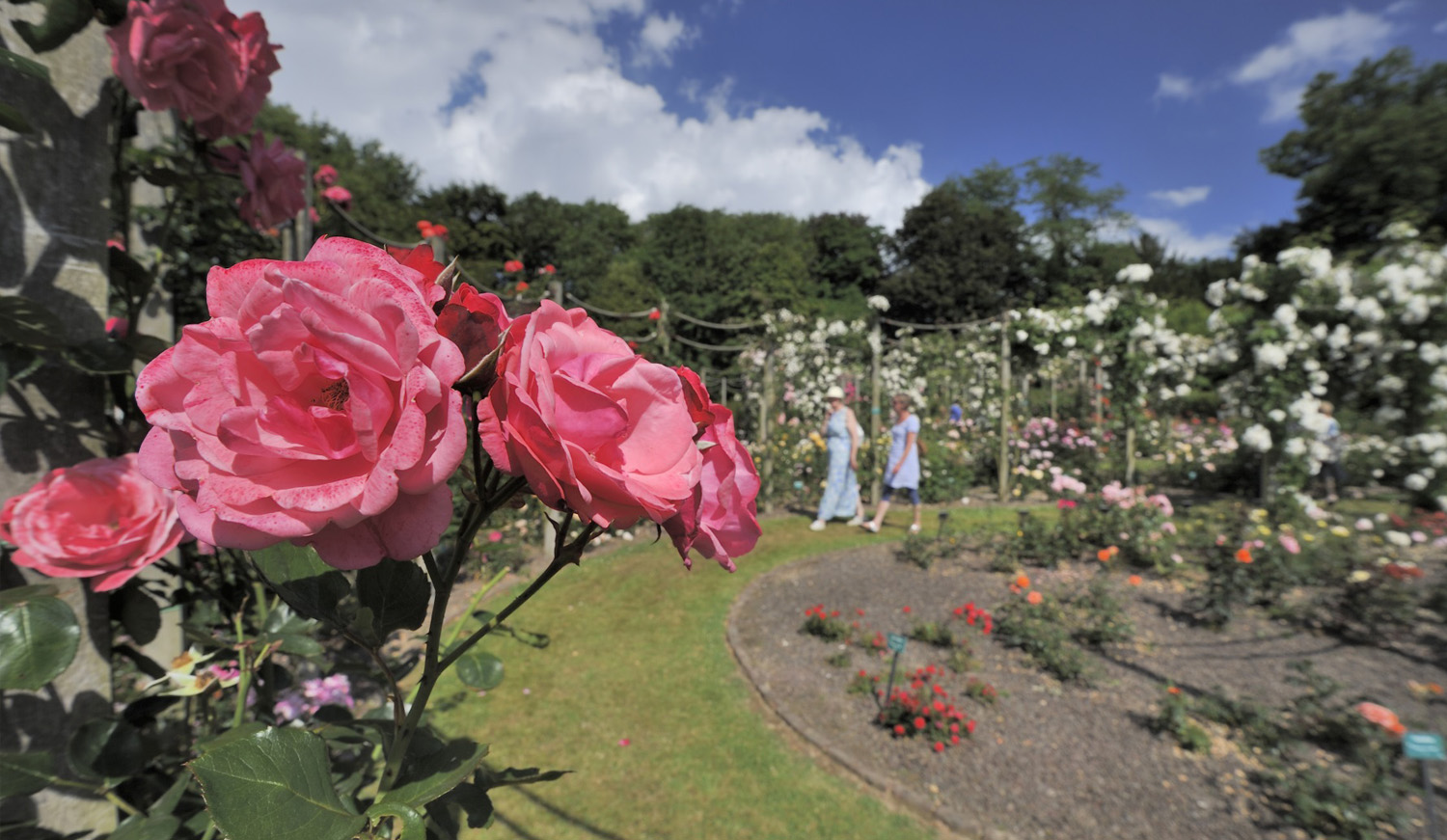
Rose garden Coloma
Knights and a chamberlain
The castle on the estate housed noble families for many generations. The estate is named after Karel de Coloma, chamberlain to Empress and Queen Maria Theresia of Austria. After his marriage to Baroness Eugenia Roose, he became owner of the castle. After the Second World War, the castle was used as a boarding school. In 1982, the castle passed into the hands of the Flemish Region, in 1984 the municipality of Sint-Pieters-Leeuw purchased the castle and began its restoration and renovation, turning it into a cultural centre. The garden developed step by step into the superb collection of roses it has today.
How dreams became reality
There was, however, a demand to make the park more attractive for its visitors. Inspired by the name Roose, the idea emerged for a rose garden. The Agency for Nature and Forests accepted the challenge. In 1994-1995 the vegetable patch gave way to the first rose garden. The garden has predominantly red and white roses, referring to the colours of the Roose baronetcy. The geometric design reflects the original style of the estate and recalls the vegetable garden it replaced.
The enormous interest and appreciation resulted in a successor: the Flemish rose garden. For this garden, the most important Flemish rose cultivators (Louis Lens, Wilfried Delforge and the National Centre for Ornamental Plant Cultivation in Melle) offered their most representative varieties. The result was a range of 250 different varieties.
The idea of a rose trail quickly took shape and this resulted in the design of a garden tracing the history of rose cultivation and an international rose garden. These were opened in the year 2000.
In the winter of 2001-2002, the tower building was restored and was given a new function as a rose museum.
In 2004, a standard rose garden was opened. The roses here are grouped by colour. This was further expanded with the breeding of roses on stem. The creation of the standard rose garden concentrated the attention in this particular spot in Coloma on the cultivation of roses grafted onto stems.
2009 was the year of the Japanese rose garden, with more than 150 varieties.
The Chinese rose garden was officially opened in 2012.
To celebrate the 20th anniversary of Coloma Rose Garden in 2015, a new rose named ‘Coloma’ was planted at the entrance to the rose garden.
All this has resulted in Coloma developing into the most comprehensive rose garden in the world.
The rose garden is still under full development. Annually, new countries and more varieties of rose are introduced. Or how the dream of many became a genuine pearl in the world in just 15 years.
People make roses
There is no country in Europe that cannot boast at least a few remarkable and exciting rose varieties and the rose breeders creating them. Many gardens are proud of their long traditions. Some families have been running their gardens for several centuries.
Dynasties of rose growers and breeders survived wars and crises. The experience, wisdom and taste are passed down and live on in families and companies. Names such as Meilland, Cant, Kordes, Poulsen, Dot and many others are part of the heritage of our continent. Their activities provide a guarantee for the future, even if modern times are overtaking the old rose culture. Traditional breeders would carry pollen from rose to rose. Today, scientists try to accelerate the natural processes using gene technology and computer modelling.
In the name of the rose
Rose breeders spend years developing a new rose. Pollinating, cross-fertilising, growing, selecting one or more plants from the thousands of attempts and then multiplying them. After a test period lasting years, they can finally be put on the market. Licence holders throughout the world then grow and breed the rose. The name is, of course, very important. Often they are named after a famous person. Actor Louis de Funès, Princess Mathilde, the artists Picasso and Monet all have their own rose.
But less famous people are also represented. The names of many roses begin with ‘Madam’ or ‘Miss’, and are a homage to wives or mistresses. Then there are also those amusing or striking names such as Happy Chappy, Poésie, Petit Serpent, Paljas, Echo, Love Letter, Pin-up, Sexy-Rexy…
You can discover them all in the rose garden!
Further information
- Agency for Nature and Forests – Regio Groene Gordels
Groenenberg Estate, 172 B Konijnestraat in 1602 Sint-Pieters-Leeuw
Tel.: 02/454 86 30
E-mail address: anb@vlaanderen.be
www.natuurenbos.be – www.rosesatcoloma.be - Open: the rose garden of Coloma is open all year from Tuesday to Sunday from 9h-20h (april-september) or 9h-17h (october-march). Also on public holidays.
- Reservation for guided tours: 02 371 22 62 or toerisme@sint-pieters-leeuw.be







